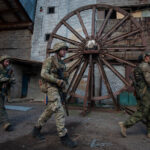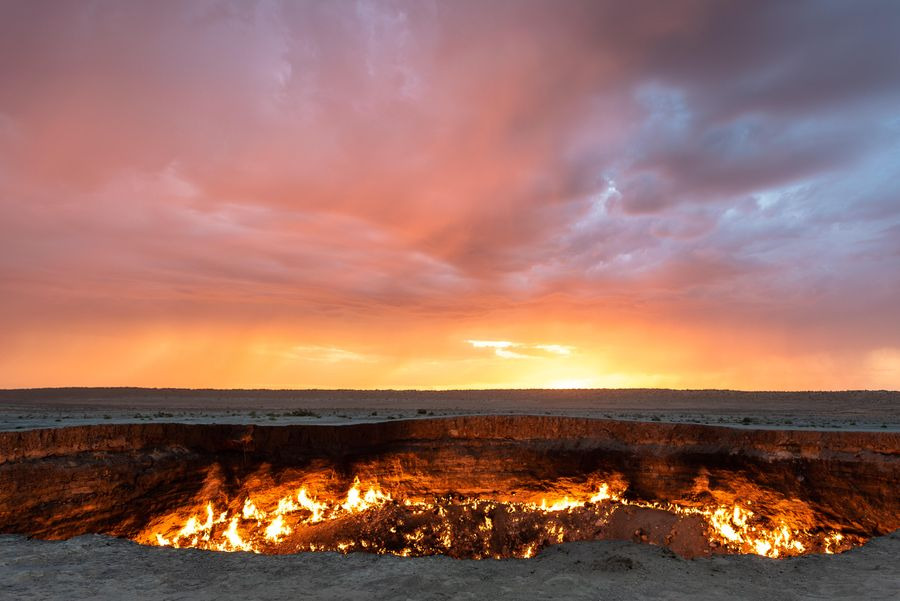
The Darvaza gas crater can be located in the center of Turkmenistan in the Karakum Desert. It lies close to the capital city of Ashgabat. Amidst the secluded and remote northern region of the Karakum Desert, amongst nothing but sand, can be seen a bright red-orange inferno, a molten gas pit known as the Gates from Hell. The closer one gets to the crater, the stronger the scent of what can be described as propane creeps through the air surrounding the region.
Its never ending flames have continued to light up the sky for more than 5 decades and its massive size of around 230 feet in diameter (equivalent to 3/4 of an American football field) and its depth of more than 60 feet has grasped the attention and curiosity of thousands throughout the years. The blaze of fire is continuously fed by natural gases that exude through the cracks and joints of the sediment rock beneath the crater. Its origin is unclear, however some speculate and report that the crater formed in 1971 after it collapsed within itself during a research mission done by Soviet geologists (Turkmenistan formed part of the Soviet Union before its fall). It was rumored they were drilling for oil in the desert when they unexpectedly pierced through a chamber full of natural gases. The impact caused the earth to collapse and inadvertently created three massive sinkholes. The geologists, believing it would run out of its natural gas in a matter of weeks, decided to burn the gas crater. They worried that the toxic gases, such as methane, would reach the atmosphere and harm others.

In 2013 (after two years of trying to get into the country of Turkmenistan) a Canadian explorer George Kourounis, rappelled down the grand inferno using a special heat-resistant suit. His mission and objective was to obtain samples of the soil at the bottom of the Darvaza gas crater and see if there was any bacteria known as extremophile bacteria. This type of bacteria is known for its ability to live under extreme temperatures, and with further studies it may be possible to understand better how these small microorganisms are able to survive this environment.
source: newsbreak















